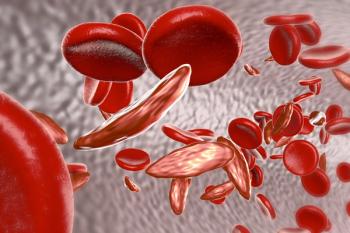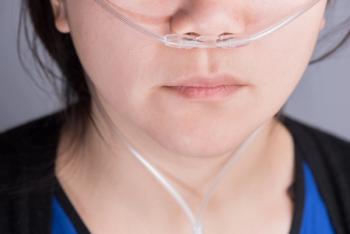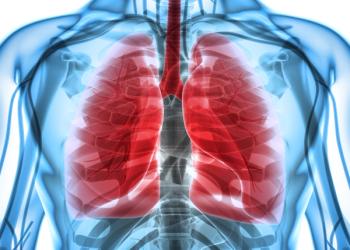
An educational nursing program can positively impact medication compliance in patients receiving oral pulmonary arterial hypertension (PAH) therapies.

Laura is the vice president of content for The American Journal of Managed Care® (AJMC®) and all its brands, including Population Health, Equity & Outcomes; Evidence-Based Oncology™; and The Center for Biosimilars®. She has been working on AJMC since 2014 and has been with AJMC’s parent company, MJH Life Sciences®, since 2011.
She has an MA in business and economic reporting from New York University. You can connect with Laura on LinkedIn or Twitter.

An educational nursing program can positively impact medication compliance in patients receiving oral pulmonary arterial hypertension (PAH) therapies.

The upcoming 2021 virtual meeting of the American Academy of Dermatology (AAD) will offer more than 75 sessions. Some of the topics to keep an eye out for include treating minority populations, the impact of COVID-19, and patients with cancer.

New research presented at AMCP 2021, the annual meeting of the Academy of Managed Care Pharmacy, evaluated treatment patterns and costs related to hospitalization for patients with pulmonary arterial hypertension (PAH).

A better understanding of the genetic etiology of pulmonary arterial hypertension and its molecular variants is needed to develop better therapies for the disease, which has no agents available that can reverse or halt it.

After cases of rare and severe blood clots led to 1 death and 1 hospitalization, the CDC and FDA will pause the use of Johnson & Johnson's (J&J) COVID-19 vaccine.

Adjunct nutritional therapies may be a simple way to improve the prognosis for patients with pulmonary arterial hypertension (PAH) or chronic thromboembolic pulmonary hypertension who are hospitalized.

Registry of patients with pulmonary arterial hypertension (PAH) treated with selexipag provides insights into real-world dosing regimens and outcomes.

The combination of lenalidomide with steroid dexamethasone is standard of care in multiple myeloma (MM), but new research shows older patients can be spared the steroids.

Idiopathic pulmonary arterial hypertension (PAH) is associated with iron deficiency, which is in turn associated with worse functional capacity and survival in PAH; however, iron repletion by infusion provided no significant clinical benefit.

Disease severity was strongly associated with health-related quality of life, moderately associated with use of disability insurance, and weakly associated with household income for patients with sickle cell disease.

An ongoing multicenter study in Japan will evaluate reductions in pulmonary vascular resistance 8 months after initiating the combination therapy in pulmonary arterial hypertension.

Wound care is costly, costing at least $28.1 billion annually for the Medicare population alone. Treating patients with wounds can be complex as they often have multiple comorbidities that impede wound healing.

Generally, life sciences companies are aligned around the benefit of using value-based insurance design (VBID) to address health care costs and ensure that medications get to the patients who need them.

Minimal residual disease (MRD) is being used more frequently in clinical trials and to identify the best treatment course for patients, but unknowns remain about the optimal use of MRD testing.

Patients with pulmonary arterial hypertension (PAH) and chronic thromboembolic pulmonary hypertension had similar incidence of COVID-19, but the impact on clinical operations at the centers that treat these patients was substantial.

A panel of experts provided consumer insights into value-based insurance design (VBID) and how the COVID-19 pandemic may have changed consumer behaviors in a way that VBID may be able to address as the country emerges from the pandemic.

A desire to remove barriers to high-value care and provide services that would improve health and quality of life drove early adopters of value-based insurance design (VBID).

A panel of policy experts, including employees of the previous 2 administrations and a former lobbyist for health plans, discusses achievements of value-based insurance design and how to take the concept to the next level.

Whole-genome sequencing (WGS) is at least as accurate as conventional tests when it comes to genomic profiling in patients with acute myeloid leukemia and myelodysplastic syndromes.

Idecabtagene vicleucel induced progression-free survival up to 20 months and a complete response in one-third of patients with multiple myeloma who had relapsed multiple times and had received at least 3 previous lines of treatment.

A review of evidence finds that oxygen therapy may be beneficial for all patients with pulmonary arterial hypertension, not just those who develop severe hypoxemia.

In a briefing, the White House COVID-19 Team discussed the first guidance from the CDC on activities that individuals fully vaccinated against COVID-19 can safely resume, and Anthony S. Fauci, MD, director of the National Institute of Allergy and Infectious Diseases, gave an update on antiretroviral drug development.

Patients with pulmonary arterial hypertension (PAH) who are treated with selexipag within 6 months of their diagnosis had a reduced risk of morbidity/mortality compared with patients who were treated longer than 6 months after diagnosis.

Targeting pulmonary arterial capacitance or compliance can improve overall survival and quality of life in patients with pulmonary arterial hypertension (PAH) and pulmonary hypertension secondary to left heart disease (PH-LHD).

Direct inpatient and outpatient costs are significantly higher for patients with untreated spinal muscular atrophy (SMA) compared with matched controls.

Triple oral combination therapy with macitentan, riociguat, and selexipag may be a promising strategy to treat patients with low/intermediate-risk pulmonary arterial hypertension (PAH), and possibly even patients with high-risk PAH.

While diagnostic algorithms have evolved in the last decade, there remains an urgent need for innovative therapeutic options to treat systemic sclerosis with pulmonary arterial hypertension.

While only 3 small interfering RNA (siRNA)-based therapies have been approved, the market is poised to expand with 7 other candidates in phase 3 trials.

The FDA has granted priority review of the supplemental New Drug Application for ruxolitinib for the treatment of steroid-refractory chronic graft-versus host disease (GVHD).

Survival among patients with myeloproliferative neoplasm (MPN)–associated pulmonary hypertension (PH) is generally short, although the true prevalence of PH among these patients is poorly understood.

259 Prospect Plains Rd, Bldg H
Cranbury, NJ 08512
© 2025 MJH Life Sciences®
All rights reserved.
